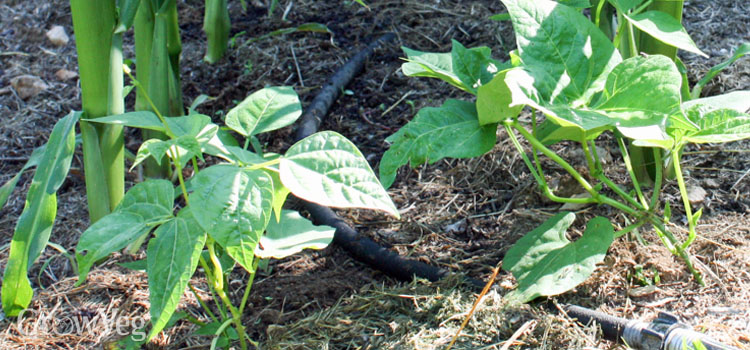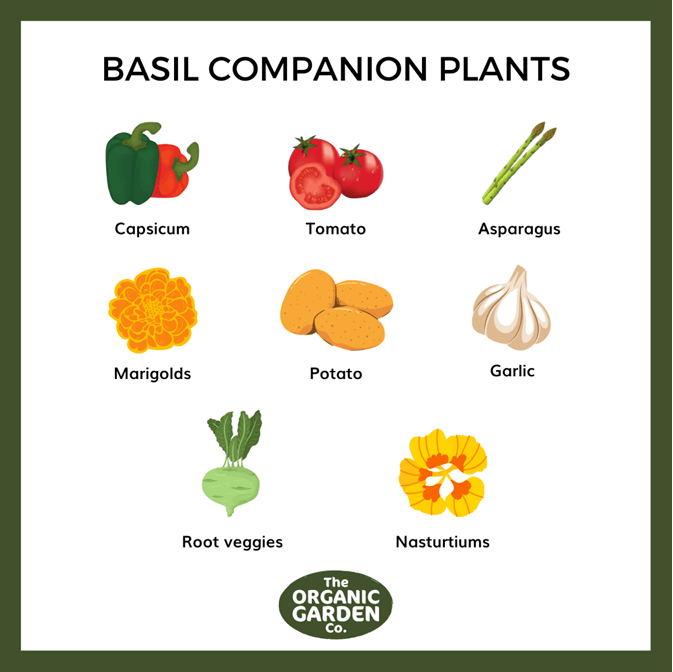The Ultimate Guide To Companion Planting With West Coast Seeds
The Ultimate Guide to Companion Planting with West Coast Seeds
Companion planting is a gardening technique that involves planting certain types of plants together to benefit each other. By carefully selecting which plants to grow near each other, you can improve the growth, health, and productivity of your crops.
There are many different benefits to companion planting. Some of the most common include:
- Attracting beneficial insects. Many plants attract beneficial insects, such as ladybugs, lacewings, and parasitic wasps. These insects help to control pests in your garden, which can save you time and money on pest control products.
- Reducing the risk of pests and diseases. Some plants can actually repel pests or diseases. For example, marigolds are known to repel nematodes, which can damage root crops.
- Improving soil fertility. Certain plants can help to improve the soil quality in your garden. For example, legumes, such as beans and peas, fix nitrogen in the soil, which can be used by other plants.
- Providing shade and wind protection. Some plants can provide shade and wind protection for more delicate plants. This can help to prevent plants from getting sunburned or damaged by wind.
- Complementing each other's nutrients. Some plants have different nutrient requirements, so planting them together can help to ensure that each plant gets the nutrients it needs.
If you're new to companion planting, it can be helpful to use a companion planting chart. These charts show which plants are compatible with each other and which plants should be avoided.
West Coast Seeds offers a comprehensive companion planting chart that includes information on over 100 different vegetables, herbs, and flowers. You can download a free copy of the chart from the West Coast Seeds website.
Once you've chosen which plants you want to grow, you can start planning your garden layout. When choosing plant partners, it's important to consider the following factors:
- Sunlight requirements. Make sure to plant compatible plants together, in terms of their sunlight needs. For example, you wouldn't want to plant a sun-loving tomato plant next to a shade-loving lettuce plant.
- Water requirements. Similarly, you need to make sure that your plant partners have similar water requirements. If one plant needs more water than the other, it could lead to problems.
- Soil type. Some plants prefer certain types of soil, so it's important to match your plant partners with the right soil conditions.
- Pest and disease resistance. If you're concerned about pests and diseases, you can plant companion plants that help to repel or attract certain insects.
Once you've considered all of these factors, you can start planting your companion plants. Be sure to follow the instructions on the seed packets for planting depth and spacing.
With a little planning, you can use companion planting to create a healthy and productive garden. By planting the right plants together, you can attract beneficial insects, reduce the risk of pests and diseases, improve soil fertility, and provide shade and wind protection.
Companion planting is a gardening technique that involves planting certain plants together to benefit each other. By understanding which plants are compatible, you can create a more productive and pest-free garden.
West Coast Seeds is a leading supplier of organic seeds and gardening supplies. They have a comprehensive companion planting guide that can help you choose the right plants for your garden. The guide includes information on which plants attract beneficial insects, which plants repel pests, and which plants can help improve the soil.
To learn more about companion planting with West Coast Seeds, visit their website at Gardenia Inspiration. You can also find helpful articles, videos, and tips on their blog.
FAQ of companion planting west coast seeds
- What are the benefits of companion planting?
Companion planting is a gardening technique that involves planting certain plants together to benefit each other. There are many benefits to companion planting, including:
- Attracting beneficial insects. Some plants attract beneficial insects, such as ladybugs and parasitic wasps, which help to control pests. For example, planting marigolds near tomatoes can help to repel tomato hornworms.
- Distracting pests. Other plants can distract pests, so they are less likely to bother your other plants. For example, planting nasturtiums near cabbages can help to attract cabbage moths away from the cabbages.
- Improving soil health. Some plants can improve the soil quality, which can benefit all of the plants in your garden. For example, planting legumes, such as peas and beans, can fix nitrogen in the soil, which is a nutrient that many plants need.
- Providing shade and shelter. Some plants can provide shade and shelter for other plants, which can help to protect them from the elements and pests. For example, planting tall plants, such as sunflowers, near shorter plants, such as lettuce, can help to protect the lettuce from the sun and wind.
- Minimizing competition. Some plants compete for resources, such as water and nutrients. By planting these plants together, you can minimize competition and help each plant to thrive. For example, planting tomatoes and basil together can help to improve the flavor of the tomatoes, as basil helps to deter pests that can damage tomatoes.
- What are some good companion plants for West Coast Seeds?
West Coast Seeds offers a wide variety of vegetable and herb seeds, so there are many different companion planting possibilities. Here are a few examples of good companion plants for West Coast Seeds:
- Carrots and onions: Carrots and onions can help to repel each other's pests.
- Beans and corn: Beans and corn are a classic companion planting combination. Beans fix nitrogen in the soil, which corn benefits from. Corn provides shade and shelter for beans, which can help to protect them from the sun and wind.
- Lettuce and tomatoes: Lettuce and tomatoes can help to improve each other's flavor. Lettuce helps to deter pests that can damage tomatoes, and tomatoes help to deter pests that can damage lettuce.
- Peas and broccoli: Peas and broccoli can help to attract beneficial insects, such as ladybugs and parasitic wasps, which help to control pests.
- Spinach and strawberries: Spinach and strawberries can help to improve each other's growth. Spinach helps to suppress weeds, which can compete with strawberries for water and nutrients. Strawberries help to improve the drainage of the soil, which spinach benefits from.
- When is the best time to plant companion plants in West Coast?
The best time to plant companion plants in West Coast depends on the specific plants you are planting. In general, you should plant cool-season crops, such as lettuce and spinach, in the early spring or fall. You should plant warm-season crops, such as tomatoes and peppers, in the late spring or summer.
- How far apart should companion plants be planted?
The spacing requirements for companion plants vary depending on the specific plants you are planting. In general, you should follow the spacing recommendations on the seed packet.
- What are some resources for learning more about companion planting?
There are many resources available to help you learn more about companion planting. Here are a few suggestions:
- The Companion Planting Guide from West Coast Seeds: This guide provides detailed information on companion planting, including which plants work well together and which plants should be avoided.
- The Companion Planting Chart from the University of California, Davis: This chart provides a quick reference guide for companion planting.
- The Companion Planting Blog from Epic Gardening: This blog provides articles on a variety of companion planting topics.
- The Companion Planting Podcast from Square Foot Gardening: This podcast features interviews with experts on companion planting.
- The Companion Planting Facebook Group: This group is a forum for gardeners to ask questions and share tips about companion planting.
Image of companion planting west coast seeds
- Image 1: A garden bed with tomatoes, basil, and onions. The tomatoes and basil are known to be companion plants, as they help to deter pests and attract beneficial insects. The onions help to improve the flavor of the tomatoes.
- Image 2: A garden bed with carrots, radishes, and lettuce. Carrots and radishes are both root crops, so they can be planted together without competing for space. Lettuce is a leafy green that can help to provide shade for the carrots and radishes, which can help to prevent them from bolting (flowering prematurely).

- Image 3: A garden bed with beans, peas, and corn. Beans and peas are nitrogen-fixing plants, which means that they can help to improve the nitrogen content of the soil. Corn is a tall plant that can provide support for the beans and peas to climb.

- Image 4: A garden bed with cucumbers, melons, and squash. These plants all have similar growing requirements, so they can be planted together in a sunny spot. They also benefit from being planted near each other, as they can help to attract pollinators.

- Image 5: A garden bed with herbs, such as rosemary, thyme, and lavender. Herbs can be planted together in a sunny spot, as they all have similar growing requirements. They can also be used to deter pests and attract beneficial insects.

Post a Comment for "The Ultimate Guide To Companion Planting With West Coast Seeds"